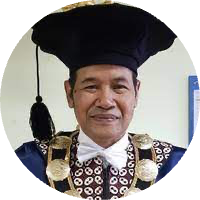Teachers' perceptions of ethnomathematics in Sorong Regency, West Papua
DOI:
https://doi.org/10.21831/ej.v2i2.41134Keywords:
Ethnomathematics, ethnomathematical approach, Papuans, teacher's perceptionAbstract
The purpose of this study was to describe the knowledge of teachers in Sorong Regency on the concept of ethnomathematical approach, the role of ethnomathematical approach, the implementation of the ethnomathematical approach, the implementation characteristics of ethnomathematical approach, and ethnomathematics knowledge of West Papua. This is qualitative research with qualitative descriptive methods. Data were collected using a questionnaire distributed through Google Form. The study selected several teachers as the research respondents to answer the existing problems in accordance with the research objectives. The results showed that in terms of conceptual knowledge, most teachers had been aware of ethnomathematics and had known the purpose of the ethnomathematical approach, but they had no idea about the principles, advantages, and weaknesses of the ethnomathematical approach. Judging from the role of the ethnomathematical approach, most teachers stated that ethnomathematics helped guide students in their learning, helped students appreciate unexpected useful discoveries, helped them to reflect from their learning and provided them with opportunities to collect information needed to solve math problems, think logically, consistently, systematically, and to take notes carefully. As seen from the implementation of the ethnomathematical approach, most of the teachers had never implemented the ethnomathematical approach in the classroom, and they had no idea about the principles of implementation, ethnomathematical learning strategies, ethnomathematical learning resources, and management of the learning environment in ethnomathematics approach. Based on the implementation characteristics of the ethnomathematical approach, most teachers had no idea about the instruments, content, and cooperation in ethnomathematics learning. Meanwhile, in terms of ethnomathematics knowledge, most of the West Papuan teachers had never heard of the application of ethnomathematical learning using sero kokas, traditional Papuan Tifa tools, Papuan bow and arrow, Papuan noken, and ethnomathematical artifacts from Papua for classroom learning.
References
Abdullah, A. S. (2017). Ethnomathematics in perspective of sundanese culture. Journal on Mathematics Education, 8(1), 1–16. https://doi.org/10.22342/jme.8.1.3877.1-15
Bupati Sorong dinilai berhasil terapkan pendidikan gratis. (2015, July 12). Jubi.Co.Id. https://jubi.co.id/bupati-sorong-dinilai-berhasil-terapkan-pendidikan-gratis/
D'Ambrosio, U. (2001). General remarks on ethnomathematics. ZDM: The International Journal on Mathematics Education, 33(3), 67–69. https://doi.org/10.1007/BF02655696
Frans, J., & Kosolosky, L. (2014). Mathematical Proofs in Practice: Revisiting the reliability of published mathematical proofs. THEORIA. Revista de Teoría, Historia y Fundamentos de La Ciencia, 29(3), 345–360. https://www.pdcnet.org/theoria/content/theoria_2014_0029_0003_0345_0360
Heryan, U. (2018). Meningkatkan kemampuan komunikasi matematis siswa SMA melalui pendekatan pembelajaran matematika realistik berbasis etnomatematika. Jurnal Pendidikan Matematika Raflesia, 3(2), 94–106. https://doi.org/10.31186/jpmr.v3i2.6290
Katharina, R. (2015). Implementasi kebijakan pembentukan unit Percepatan Pembangunan Provinsi Papua dan Provinsi Papua Barat (UP4B) dalam konteks otonomi khusus. Jurnal Politica Dinamika Masalah Politik Dalam Negeri Dan Hubungan Internasional, 6(2), 123–144. https://doi.org/10.22212/jp.v6i2.314
Pemerintah Provinsi Papua Republik Indonesia. (2021). Pembangunan pendidikan harus dimulai dari usia dini. Papua.Go.Id. https://www.papua.go.id/view-detail-berita-2754/undefined
Prabawati, M. N. (2016). Etnomatematika masyarakat pengrajin anyaman rajapolah Kabupaten Tasikmalaya. Infinity Journal, 5(1), 25–31. https://doi.org/10.22460/infinity.v5i1.p25-31
Pusat Penilaian Pendidikan Kementerian Pendidikan dan Kebudayaan Republik Indonesia. (2019). Diagnosa Hasil Ujian Nasional Kabupaten Sorong. Kementerian Pendidikan dan Kebudayaan Republik Indonesia. http://118.98.227.96/RaporUN/
Rosa, M., & Orey, D. (2011). Ethnomathematics: The cultural aspects of mathematics. Revista Latinoamericana de Etnomatemática: Perspectivas Socioculturales de La Educación Matemática, 4(2), 32–54. http://funes.uniandes.edu.co/3079/
Sirate, S. F. S. (2015). Menggagas integrasi multikultur pembelajaran matematika: Suatu telaah etnomatematika. AULADUNA: Jurnal Pendidikan Dasar Islam, 2(2), 246–263. http://journal.uin-alauddin.ac.id/index.php/auladuna/article/view/880
Sudjana, N., & Rifai, A. (2003). Teknologi pengajaran (4th ed.). Sinar Baru.
Unodiaku, S. S. (2013). Effect of ethno-mathematics teaching materials on students' achievement in mathematics in Enugu State. Journal of Education and Practice, 4(23), 70–77. https://citeseerx.ist.psu.edu/viewdoc/download?doi=10.1.1.955.4464&rep=rep1&type=pdf
Wahyuni, A., Tias, A. A. W., & Sani, B. (2013). Peran etnomatematika dalam membangun karakter bangsa. Seminar Nasional Matematika Dan Pendidikan Matematika, 1, 113–118. http://eprints.uny.ac.id/id/eprint/10738
Downloads
Published
How to Cite
Issue
Section
Citation Check
License
The authors submitting a manuscript to this journal agree that, if accepted for publication, copyright publishing of the submission shall be assigned to Ethnomathematics Journal. However, even though the journal asks for a copyright transfer, the authors retain (or are granted back) significant scholarly rights.

Ethnomathematics Journal by https://journal.uny.ac.id/index.php/ethnomath is licensed under a Creative Commons Attribution-ShareAlike 4.0 International License.












